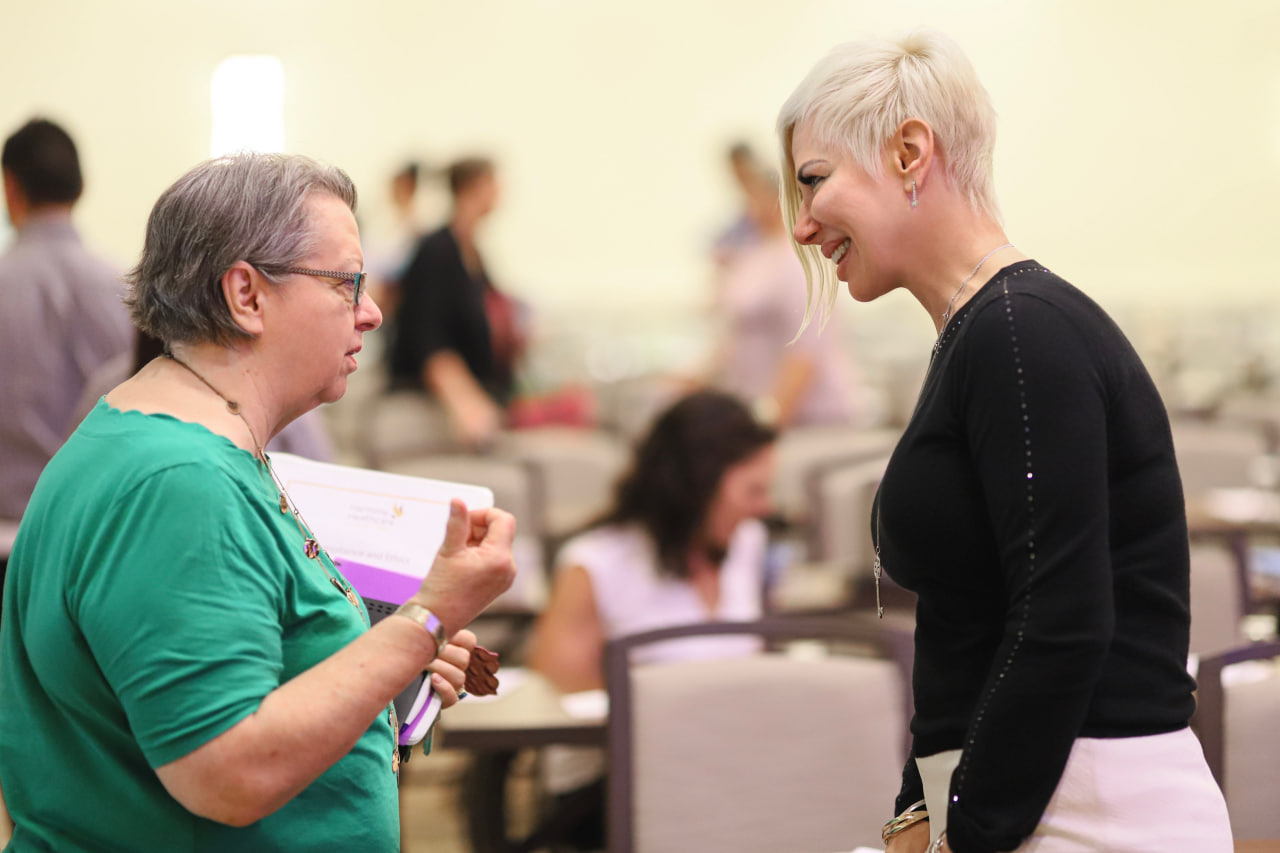
The statement that "body language is 70% of communication", which I say regularly, is a commonly cited but debated statistic, as the actual percentage can vary depending on the context and interpretation. However, it is widely acknowledged that non-verbal communication, including body language, plays a significant role in conveying messages. In healthcare settings, where effective communication is crucial for patient care, understanding and interpreting body language is particularly important.
The top 10 reasons on the importance of interpreting non-verbal communication, including body language:
1. Patient-Provider Communication:
- Healthcare professionals use body language to convey empathy, attentiveness, and reassurance. A comforting touch, maintaining eye contact, and open body posture can all contribute to building trust and rapport with patients.
2. Patient Expression of Needs:
- Patients may use body language to express pain, discomfort, or emotions that they find challenging to articulate verbally. Observing their posture, facial expressions, and gestures can provide valuable insights for healthcare providers.
3. Cultural Sensitivity:
- Different cultures may have varying norms regarding body language and communication styles. Healthcare providers need to be culturally competent and aware of how different patients may express themselves non-verbally.
- Patients may exhibit signs of anxiety or stress through body language, such as fidgeting, avoiding eye contact, or adopting defensive postures. Recognizing these cues allows healthcare providers to address underlying concerns.
4. Communication with Non-Verbal Patients:
- Some patients may have difficulty communicating verbally due to medical conditions or language barriers. Healthcare providers must be skilled at interpreting non-verbal cues to understand patient needs and preferences.
5. Understanding Anxiety and Stress:
- Some patients may have difficulty communicating verbally due to medical conditions or language barriers. Healthcare providers must be skilled at interpreting non-verbal cues to understand patient needs and preferences.
6. Team Communication:
- Effective communication within healthcare teams is crucial for patient safety. Team members use body language to convey urgency, collaboration, or concern, ensuring smooth coordination in fast-paced and high-stakes environments.
7. Informed Consent and Shared Decision-Making:
- During discussions about treatment options, procedures, or informed consent, body language can complement verbal communication. Patients may express agreement, hesitation, or uncertainty through their non-verbal cues.
8. Breaking Bad News:
- When delivering difficult news to patients or their families, healthcare providers need to be attuned to their body language to gauge emotional reactions. This awareness helps in providing appropriate support and follow-up care.
9. Patient Education:
- Healthcare professionals use body language to enhance patient education. Clear and expressive gestures, visual aids, and interactive demonstrations can aid in conveying complex medical information.
10. Preventing Miscommunication:
- Misinterpretation of body language can lead to misunderstandings or misdiagnoses. Training healthcare providers to be aware of their own body language and interpret patients' cues accurately is essential for effective communication.
- While non-verbal communication is essential, it should be complemented by clear verbal communication to ensure that the message is accurately conveyed and understood in healthcare settings. Ongoing training and awareness of the impact of body language contribute to improved patient-provider interactions and overall healthcare outcomes.
Case Study:
A young 9-year-old daughter demonstrates and vocalizes:
- Thoughts of suicide,
- Thoughts of self-harm,
- Statements that she would be better off dead,
- Panic Attacks,
- Complete breakdown of mental health (screaming, flailing, crying, statements that she was hit and questions of why would someone hit her if they loved her, and more), and
- Social withdrawal.
The mother wisely calls in the Crisis Intervention Team who document the following:
- Hiding her face in the blanket. (Classic body language interpreted below.)
- "Tearful."
- "Anxious."
- "Daughter reports increased anxiety and depression over the past few weeks, mostly at night."
- "Daughter reports these symptoms worsened in intensity and frequency over the past few days and she is struggling with processing her emotions about it."
- "Daughter reports these symptoms worsened related to family dynamics changing at dad's house."
- "Daughter reports increased anxiety about leaving mom, as she is scheduled to go to dad's house tonight."
- "Daughter reports that mom is her main support."
- "Daughter reports that she is having difficulty controlling her mental health and suicidal thoughts."
- "Daughter reports coping skills are spending time with mom."
- "Daughter reports that she is well supported at school and likes school."
- "School reported daughter is upbeat and engages well with peers, however, does have occasional absences and presents with separation anxiety from mom."
- "Daughter reports she did endorse suicidal ideation with plan to hold breath until she dies."
Body Language Example: Hiding / Covering Face:
Many non-healthcare professionals might gloss over the first observation made above by the crisis response team "hiding her face in the blanket".
When a child hides their face in a blanket, especially in the context of trauma, it can be a non-verbal expression of seeking comfort, protection, or a desire to shield themselves from distressing stimuli.
This behavior may be a coping mechanism and can convey various emotions or needs:
1.) Seeking Comfort:
- Hiding the face in a blanket can be a way for the child to seek comfort and security. The softness and familiarity of the blanket may provide a sense of reassurance during moments of distress.
2.) Creating a Safe Space:
- The act of covering the face can create a physical barrier, symbolizing the child's attempt to create a safe and private space. It may be an instinctive response to distance oneself from potential threats or stressors.
3.) Regulating Overstimulation:
- Children who have experienced trauma may become easily overwhelmed by sensory stimuli. Covering the face may serve as a means of self-regulation, helping to reduce exposure to external stimuli and create a sense of control.
4.) Expressing Discomfort or Fear:
- Hiding the face can be an expression of discomfort, fear, or anxiety. It may indicate that the child is feeling vulnerable and is attempting to shield themselves from perceived threats.
5.) Need for Solitude:
- Children, like adults, may sometimes need solitude when processing difficult emotions. Covering the face may be a way of signaling a desire for personal space and time to cope with internal struggles.
6.) Communication Challenge:
- For some children, especially those who have difficulty verbalizing their emotions, non-verbal actions like hiding the face can serve as a form of communication. It may signify an inability or reluctance to express their feelings verbally.
Summary:
- It's important for caregivers, educators, or mental health professionals to approach such behavior with sensitivity and empathy. Building trust, providing a supportive environment, and encouraging open communication can help address the child's emotional needs and facilitate their healing process. If a child's behavior suggests signs of trauma, seeking professional guidance from a qualified mental health professional is crucial for appropriate intervention and support.
Link to VLOG of Mother:
- The above case study is happening as we speak and the mother is willing to share her journey to help others identify, prevent, and treat individuals with mental health challenges.
#IAMCHRISTINA
#probatecourt
#domesticviolence
#coercivecontrol
#suffolkprobatecourt
#courtorderedtrauma
#girlsinc.
.jpg?width=1514&height=594&name=Artboard%201@4x-100%20(1).jpg)


.png?width=208&name=Logo-KrisB%20(1).png)